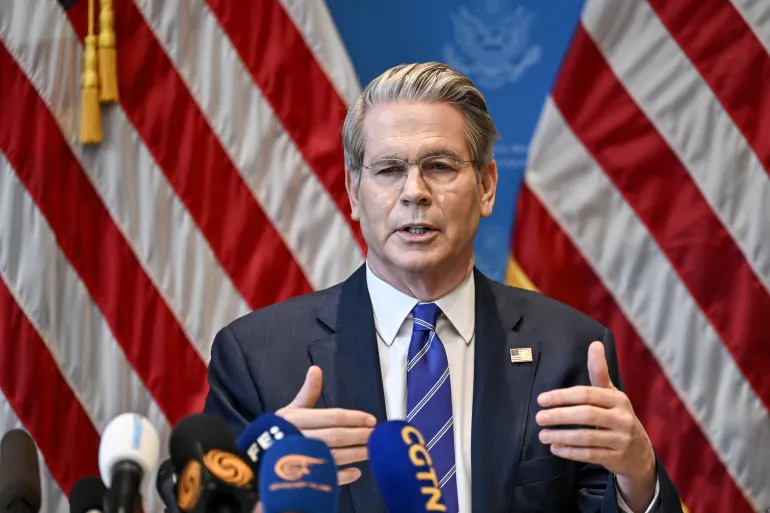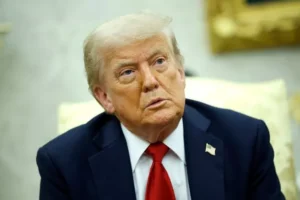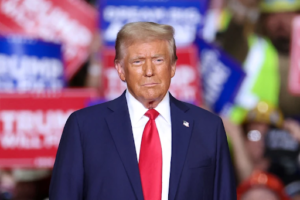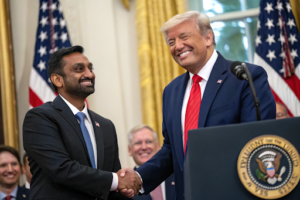In a significant development in global trade, the United States and China have agreed to suspend the steep tariffs they had levied on each other’s goods. This decision, announced on Monday, represents a temporary truce in a long-standing trade war between the world’s two largest economies. The move is expected to ease economic tensions and pave the way for further negotiations aimed at achieving long-term trade stability.
The Background: Years of Escalating Trade Tensions
The US-China trade conflict began several years ago, with both nations imposing retaliatory tariffs on a wide range of goods. The dispute intensified under the leadership of US President Donald Trump, who has pursued an “America First” trade policy since his return to office in January.
Initially, the Trump administration imposed tariffs on multiple countries. However, most of these duties were eventually suspended, leaving China as the primary target of US trade action. Trump’s administration argued that China’s trade practices, including intellectual property violations and forced technology transfers, were unfair and detrimental to American businesses and workers.
Escalating Tariffs: A Costly Trade War
What began as limited tariffs gradually evolved into a full-scale economic standoff. Both countries continued to raise the stakes, with tit-for-tat tariffs increasing to substantial levels. At the height of the trade war:
-
The United States had imposed tariffs as high as 145 percent on certain Chinese products.
-
China responded with tariffs of up to 125 percent on American goods.
These tariffs affected a wide variety of industries, including agriculture, technology, automobiles, and consumer electronics. The economic impact was felt globally, as supply chains were disrupted and the cost of goods rose for businesses and consumers alike.
The Breakthrough: A 90-Day Truce
On Monday, the United States and China reached a breakthrough agreement to pause their escalating tariff battle for a period of 90 days. During this time, both nations have committed to halting any new tariffs and engaging in further discussions aimed at resolving their economic disputes.
President Trump hailed the agreement as a positive step forward, describing it as a “reset” in the US-China relationship. He also mentioned the possibility of speaking directly with Chinese President Xi Jinping later in the week, signaling a renewed willingness to engage in high-level dialogue.
This short-term suspension of tariffs provides breathing space for negotiators to explore a more comprehensive and long-term solution to the ongoing trade conflict.
Why Now? The Political and Economic Factors
Several factors likely contributed to the timing of this truce:
-
Economic Pressures: Both the US and Chinese economies have shown signs of strain under the weight of the prolonged trade war. American farmers, for instance, have struggled to sell their goods due to Chinese tariffs, while Chinese manufacturers have faced declining exports and reduced foreign investment.
-
Stock Market Volatility: Financial markets have reacted negatively to uncertainty around global trade. Investors have been closely watching developments, and both governments may be seeking to calm markets and avoid further economic instability.
-
Geopolitical Strategy: With elections and global diplomatic priorities in play, both nations may view this temporary truce as a strategic pause that allows them to reframe their respective positions without appearing weak.
What’s Next? Opportunities and Challenges Ahead
While the 90-day suspension of tariffs offers a welcome reprieve, it is far from a permanent solution. The coming weeks will be critical in determining whether this reset leads to meaningful progress or simply delays another round of economic confrontation.
Key Issues Likely to Be Addressed
-
Intellectual Property Rights: The US has long accused China of engaging in intellectual property theft. Any long-term deal will need to address this sensitive issue to satisfy American concerns.
-
Technology Transfers and Market Access: US companies have complained about being forced to share proprietary technologies as a condition for doing business in China. These practices are likely to be a central topic in future talks.
-
Tariff Rollbacks: One of the main questions is whether both sides will agree to reduce or eliminate the existing tariffs, not just pause them. This will depend on the progress made in negotiations.
-
Trade Deficits and Currency Practices: The US has frequently raised concerns about its trade deficit with China and the role of currency manipulation. These economic fundamentals may also feature in upcoming discussions.
The Global Implications
The US-China trade war has not only affected bilateral relations but has also disrupted global trade flows. Countries that rely on open markets and stable supply chains have been caught in the crossfire. A long-term resolution would not only benefit the two superpowers but also bring relief to global markets and developing economies alike.

















